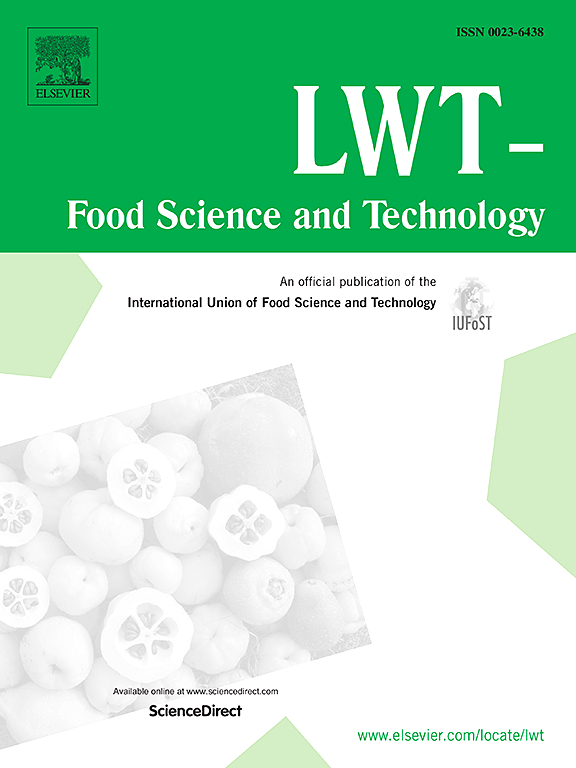Tannic acid cross-linked Poly(lactic-co-caprolactone/Gelatin electrospun nanofibrous membranes for blueberry preservation
IF 6
1区 农林科学
Q1 FOOD SCIENCE & TECHNOLOGY
引用次数: 0
Abstract
Due to the huge waste caused by fruit mildew during transportation and storage, there is an urgent need to develop novel packing materials with antibacterial and degradable properties. Herein, poly(lactic-co-caprolactone)/Gelatin/Tannic acid (PLCL/GEL/TA) membranes were fabricated by electrospinning of PLCL and GEL to obtain PLCL/GEL membranes, followed by cross-linking with TA. The microstructures of PLCL/GEL/TA membranes were characterized by scanning electron microscope (SEM). The mechanical and wetting properties were evaluated by Instron universal material testing and Drop shape analysis system, respectively. The antibacterial and antioxidant properties were determined. The preservation properties of the membranes were evaluated using blueberry as a model fruit. The results showed that smooth and uniform microstructure was formed on all electrospun membranes. The PLCL/GEL/TA membranes exhibited enhanced mechanical property, wettability, biodegradability, antioxidant and antibacterial properties, when compared to PLCL/GEL membranes without TA treatment. In addition, these increased properties showed positive correlation with TA content. Besides, TA was slowly released from the PLCL/GEL/TA membranes, in a controlled and sustained manner. Moreover, the cytotoxicity assays confirmed the non-toxic nature of these membranes. Finally, the PLCL/GEL/TA membranes effectively inhibited decay degree, weight loss, and extended the shelf life of blueberries. Overall, the antioxidant, antibacterial, biodegradable and biocompatible PLCL/GEL/TA membranes exhibited remarkable preservation performance, demonstrating significant potential as novel packing materials.

求助全文
约1分钟内获得全文
求助全文
来源期刊

LWT - Food Science and Technology
工程技术-食品科技
CiteScore
11.80
自引率
6.70%
发文量
1724
审稿时长
65 days
期刊介绍:
LWT - Food Science and Technology is an international journal that publishes innovative papers in the fields of food chemistry, biochemistry, microbiology, technology and nutrition. The work described should be innovative either in the approach or in the methods used. The significance of the results either for the science community or for the food industry must also be specified. Contributions written in English are welcomed in the form of review articles, short reviews, research papers, and research notes. Papers featuring animal trials and cell cultures are outside the scope of the journal and will not be considered for publication.
文献相关原料
公司名称
产品信息
阿拉丁
tri(1,1,1,3,3,3-Hexafluoroisopropyl) ester (HFIP)
阿拉丁
2,2-diphenyl-1-picrylhydrazyl (DPPH)
阿拉丁
Tannic acid (TA)
 求助内容:
求助内容: 应助结果提醒方式:
应助结果提醒方式:


